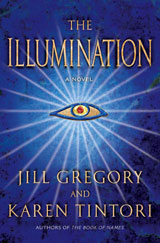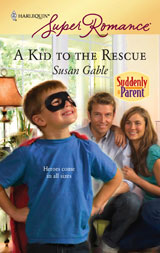VERY SUPERSTITIOUS…

It’s great to be here visiting with you today, but it’s also a bit of a challenge. A good one. While we write thrillers together seamlessly, we were a bit flummoxed about how to go about writing a blog in one voice.
The two of us have been best friends since we were young mothers. Our kids met in a mother-toddler class, hit it off immediately, and so did we. We thought we’d end up in-laws one day, but that didn’t happen. Instead, we’re writing partners with five books written together and lots more written separately. Karen is outgoing, Jill is private, but other than that, we two are a lot alike, devoted to our families and to our writing. We finish each other’s sentences, we think with one brain, writing our books line by line together.
 In THE ILLUMINATION, our new release, we explored the ancient belief in the Evil Eye, a protective symbol that plays a prominent role in the book. Before we started our research, Karen—being superstitious—already knew a lot about it, Jill not so much.
In THE ILLUMINATION, our new release, we explored the ancient belief in the Evil Eye, a protective symbol that plays a prominent role in the book. Before we started our research, Karen—being superstitious—already knew a lot about it, Jill not so much.
Karen: I’m obsessively superstitious. I come by it naturally, being raised in a Sicilian-Italian family where horseshoes wrapped in red ribbons hung over our doorways for protection and St. Christopher rode on the dashboard of our family car.
From as far back as I can remember, my mother and grandmother warned me about the evil eye—mal occhio—and how to protect myself if I thought someone was shooting the evil eye at me. More times than I can count, I watched my grandmother or one of my older female relatives perform the incantations to remove the curse from some hapless victim in our family.
Jill: I’ve never been particularly superstitious, though I’ll admit to avoiding stepping on cracks or walking under ladders. Because…why take chances? Those two are so ingrained, even my practical side won’t risk ignoring them.
Karen: And you always say, “bread and butter,” when we’re walking somewhere and have to go around opposite sides of a pole or bench or some other obstacle.
Jill: Okay, that’s another one. I learned to say, “bread and butter” as a little girl. It’s a way of saying “may nothing ever come between us” to avoid breaking a relationship. Has anyone else ever heard about this superstition, or is it a regional Midwest deal?
Karen: I’m into all of it. “Bread and butter.” “You owe me a Coke.” Throwing salt over my left shoulder if I spill some accidentally, avoiding black cats—about the only thing I don’t ascribe to is aversion to the number 13. It’s one of my lucky ones, in fact.
Jill: What I’ve never understood is why you think that if you cry on your birthday, you’ll cry all year long. Every time you say that, it cracks me up. Is that a genuine Italian superstition, or did your mother make it up?
Karen: Who knows? I don’t. But I try my damnedest not to ever cry on my birthday—even over sentimental cards. My sister, raised in that same Sicilian-Italian family, thinks I’m nuts. Still, when we started our research for THE ILLUMINATION, I learned there was more to the Evil Eye than I thought. The research was…well, eye-opening.
Jill and Karen: We had a blast learning about the incredible mythology surrounding this ancient symbol—one of the oldest and most wide-spread of all human superstitions.
The eye symbol appeared in Egyptian hieroglyphics and on the cuneiform tablets of the Babylonians and Sumerians. It was also mentioned in the Old Testament (Deuteronomy and Proverbs), and in writings by classical Greek and Roman writers such as Plutarch and Cicero. Even Socrates had a connection to the Evil Eye—he was rumored to have possessed it, holding his followers and admirers under the spell of his magnetic gaze. Who knew?
Here are some other tidbits we learned:
-
Admiration, a compliment, or an envious, overlong glance, are all thought to impart the Evil Eye.
-
In Scotland the Evil Eye is called droch shuil.
-
The belief that a person can purposely cast an Evil Eye on others is held only in Southern Italy and Sicily.
-
Protective talismans have been used to protect against the Evil Eye since antiquity. Blue beads depicting an eye are thought to deflect the evil back upon the person casting the Evil Eye, thereby protecting the intended recipient.
-
In Turkey, a protective blue eye is painted on the national airliners.
-
Animals and children were considered particularly susceptible to the Evil Eye.
-
Spitting was thought to protect against the Evil Rye.
-
Protective Evil Eye jewelry, worn for centuries, is still prevalent today, becoming increasingly popular in mainstream culture.
In fact, the two of us occasionally wear Evil Eye bracelets or hamsa charms (open-palmed hands) for good luck and protection. We’re wondering if anyone out there wears any sort of protective talisman to ward off the Evil Eye or to bring good luck. Most everyone buys into some kind of superstition or other—knock on wood, offer a “God Bless You,” or “gezundheit,” when somebody sneezes, and keep your fingers crossed, to mention a few.
Now it’s your turn. We’d love to know about your superstitions. What little rituals, charms or sayings keep you feeling safe?
***
Please leave a comment to enter to win a copy of THE ILLUMINATION. Entries accepted until midnight, PST.
To learn about Karen and Jill, please visit their websites.

 introducing readers to the Hawkins Family. This family had a total of twelve children. The hero in KID is “child” number seven. So I needed images of the entire family. When I went “shopping” for the Hawkins characters, I tried to select people who shared similar characteristics. It turned out there’s a very distinctive jawline that runs in the family, particularly in the men. Also, to my surprise as I’ve learned more about the individuals, I can see those traits in their pictures—traits I didn’t know about when I picked out my models. For example, it turns out brother Hayden is a real flirt, a real lady’s man—and you can clearly see that in his pictures. (To see the whole Hawkins Family as I envision them, with a little help from a modeling website,
introducing readers to the Hawkins Family. This family had a total of twelve children. The hero in KID is “child” number seven. So I needed images of the entire family. When I went “shopping” for the Hawkins characters, I tried to select people who shared similar characteristics. It turned out there’s a very distinctive jawline that runs in the family, particularly in the men. Also, to my surprise as I’ve learned more about the individuals, I can see those traits in their pictures—traits I didn’t know about when I picked out my models. For example, it turns out brother Hayden is a real flirt, a real lady’s man—and you can clearly see that in his pictures. (To see the whole Hawkins Family as I envision them, with a little help from a modeling website, 


 In THE ILLUMINATION, our new release, we explored the ancient belief in the Evil Eye, a protective symbol that plays a prominent role in the book. Before we started our research, Karen—being superstitious—already knew a lot about it, Jill not so much.
In THE ILLUMINATION, our new release, we explored the ancient belief in the Evil Eye, a protective symbol that plays a prominent role in the book. Before we started our research, Karen—being superstitious—already knew a lot about it, Jill not so much.